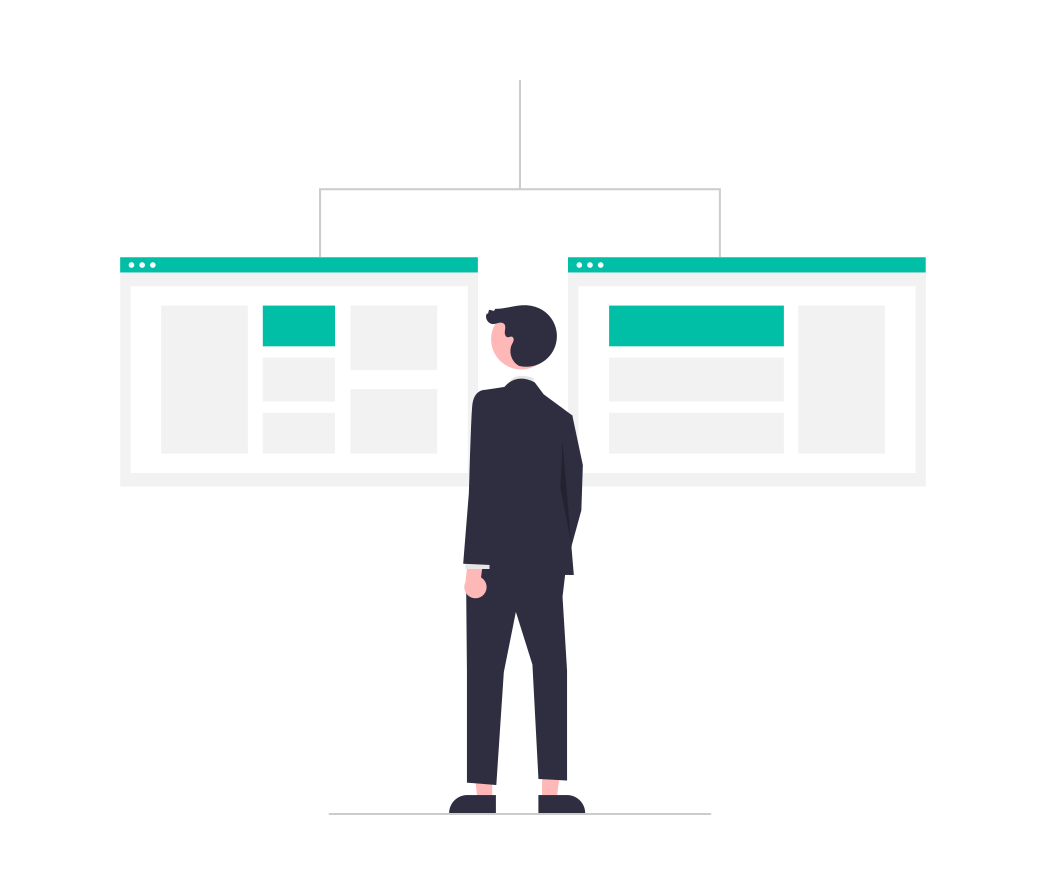Are you tired of throwing spaghetti at the wall and hoping something sticks? If you’ve found yourself wondering, “How the hell do I know what I should test next?!” — you’re not alone. Many businesses struggle with this crucial question, realizing that testing random ideas only leads to wasted resources and precious time. But don’t worry, because we are here to guide you through a strategic approach to A/B testing that will maximize your chances of success.
Prioritize for Impact
First things first, let’s prioritize where to focus your testing efforts. It’s critical to target areas of your website with the highest potential impact. Testing minor elements on low-traffic pages might not yield significant results, and it’s certainly not the best use of your resources. Instead, concentrate on the pages that receive the most traffic and identify where users are dropping off or failing to convert. Utilize analytics tools like GA4 to pinpoint these areas and prioritize them for strategic A/B testing.
(Quick tip #1: if the majority of your traffic is coming from paid advertising, then the pages you’re linking to from those ads are often a great place to start!)
Understand Your Customers through User Research
Next, it’s essential to gain a deep understanding of your target audience. User research provides invaluable insights into your customers’ preferences, pain points, and behaviors, laying the foundation for effective testing strategies.
Market Analysis and Alternative Considerations
Start by conducting thorough market research to understand the landscape in which your business operates. Identify competitors and analyze their offerings to discern what alternatives your customers may be considering. By understanding the competitive landscape, you can better position your product or service and identify areas for differentiation.
(Quick tip #2: try to check out what negative feedback customers leave on competitor products or services. If you can solve that pain point, you’ll have a quick leg up. This is something you’ll want to focus on communicating.)
Dive into Customer Feedback
One of the best sources of insight into your customers’ needs and objections is their direct feedback. Pay close attention to comments on your ads, reviews, and discussions in forums related to your industry. These offer valuable glimpses into your customers’ hesitations, objections, and pain points. Additionally, analyze the questions and complaints received by your customer service team—these often highlight recurring issues that can inform your testing hypotheses. …This is something you’ll want to highlight early and often through strategic A/B testing.
While you go through your own reviews, what are the top 1 or 2 things that most people mention they love about your product or service? This is something you’ll want to highlight early and often.
Identify Customer Needs
The ultimate goal of user research is to uncover what your customers truly need. By empathizing with their challenges and goals, you can tailor your messaging and offerings to resonate with their desires. Use qualitative methods such as surveys, interviews, and usability testing to gain deeper insights into their motivations and preferences.
(Quick tip #3: surveys & interviews to your existing clients are easy ways to get great information. Some of our favorite questions include: “Was there something that almost stopped you from buying?” and “Was there anything that really confused you on our site?”)
Review User Behavior
Once you’ve identified the page(s) to focus on first and you have a good grip on what your customers need, dive deep into current user behavior analysis. Heatmaps and video recordings are invaluable tools for understanding how users interact with your website. Spend time reviewing these insights to uncover patterns of behavior, including which elements users are engaging with and where they’re encountering obstacles. Pay particular attention to those users who are successfully completing desired actions, as well as those who aren’t.
Ask yourself these questions:
- Is there something in common with those who are successfully taking the next step, or converting?
- Is there something in common with those who are NOT taking the next step or converting?
Create Your Hypotheses for Strategic A/B Testing
With a clear understanding of user behavior, it’s time to formulate hypotheses. Using all of the information you’ve gathered, develop a list of potential problems and corresponding solutions based on your findings through strategic A/B testing.
Example:
- Problem: Most people write into customer service asking about our returns policy & warranty. Currently, that information is only available in our footer navigation and towards the bottom of the product page.
- Solution: By adding new icons and text in the first section of the page, we will ensure that our policies are very clearly and visibly communicated to customers, ultimately increasing their understanding and improving conversion rates.
Build & Launch the Experiment
Now comes the exciting part—building and launching your experiments. But hold your horses! Rushing into this phase without proper planning can spell disaster. Take your time to design the tests based on your hypotheses and implement them thoughtfully. Aim for a minimum testing period of two weeks to gather sufficient data. (If you’re on Shopify, our favorite tool is Intelligems — and you can use code: bbg for a 3-month discount!) Remember, not every test will be a winner, so be prepared to analyze the results, iterate on your approach, and continue refining your strategies.
In conclusion, effective A/B testing isn’t about blindly trying out random ideas—it’s a strategic process grounded in data and insights. By following these steps—prioritizing for impact, performing meaningful user research, reviewing current user behavior, creating hypotheses, and diligently executing experiments—you’ll be well on your way to optimizing conversions and achieving your business goals through strategic A/B testing.
Embrace the process, stay patient, and success will follow.

